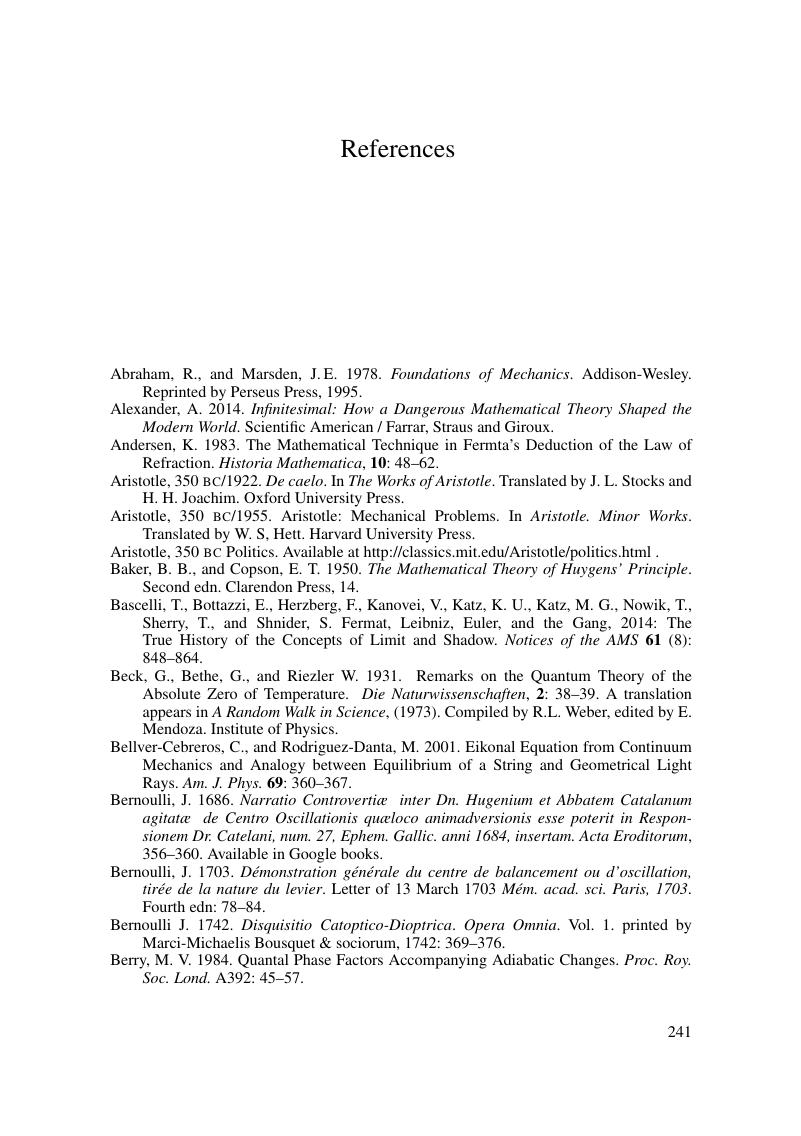Book contents
- Frontmatter
- Contents
- List of Illustrations
- Acknowledgments
- 1 Introduction
- 2 Prehistory of Variational Principles
- 3 An Excursion to Newton's Principia
- 4 The Optical-Mechanical Analogy, Part I
- 5 D'Alembert, Lagrange, and the Statics-Dynamics Analogy
- 6 The Optical-Mechanical Analogy, Part II: The Hamilton-Jacobi Equation
- 7 Relativity and Least Action
- 8 The Road to Quantum Mechanics
- Appendix A Newton's Solid of Least Resistance, Using Calculus
- Appendix B Original Statement of d'Alembert's Principle
- Appendix C Equations of Motion of McCullagh's Ether
- Appendix D Characteristic Function for a Parabolic Keplerian Orbit
- Appendix E Saddle Paths for Reflections on a Mirror
- Appendix F Kinetic Caustics from Quantum Motion in One Dimension
- Appendix G Einstein's Proof of the Covariance of Maxwell's Equations
- Appendix H Relativistic Four-Vector Potential
- Appendix I Ehrenfest's Proof of the Adiabatic Theorem
- References
- Index
- References
References
Published online by Cambridge University Press: 26 March 2018
- Frontmatter
- Contents
- List of Illustrations
- Acknowledgments
- 1 Introduction
- 2 Prehistory of Variational Principles
- 3 An Excursion to Newton's Principia
- 4 The Optical-Mechanical Analogy, Part I
- 5 D'Alembert, Lagrange, and the Statics-Dynamics Analogy
- 6 The Optical-Mechanical Analogy, Part II: The Hamilton-Jacobi Equation
- 7 Relativity and Least Action
- 8 The Road to Quantum Mechanics
- Appendix A Newton's Solid of Least Resistance, Using Calculus
- Appendix B Original Statement of d'Alembert's Principle
- Appendix C Equations of Motion of McCullagh's Ether
- Appendix D Characteristic Function for a Parabolic Keplerian Orbit
- Appendix E Saddle Paths for Reflections on a Mirror
- Appendix F Kinetic Caustics from Quantum Motion in One Dimension
- Appendix G Einstein's Proof of the Covariance of Maxwell's Equations
- Appendix H Relativistic Four-Vector Potential
- Appendix I Ehrenfest's Proof of the Adiabatic Theorem
- References
- Index
- References
Summary

- Type
- Chapter
- Information
- The Principle of Least ActionHistory and Physics, pp. 241 - 253Publisher: Cambridge University PressPrint publication year: 2018



